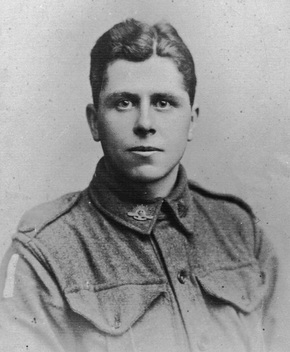SHILLAKER, William Henry
| Service Number: | 1877 |
|---|---|
| Enlisted: | 8 December 1915, Adelaide, South Australia |
| Last Rank: | Private |
| Last Unit: | 48th Infantry Battalion |
| Born: | Peterborough, England, 8 January 1892 |
| Home Town: | Adelaide, South Australia |
| Schooling: | Peterborough, England |
| Occupation: | Clerk |
| Died: | Cerebral abscess, Sydney, New South Wales, 20 July 1925, aged 33 years |
| Cemetery: |
Rookwood Cemeteries & Crematorium, New South Wales Buried at Section H, grave 5258. Memorial at NSW Garden of Remembrance, Wall 10, Row F |
| Memorials: |
World War 1 Service
| 8 Dec 1915: | Enlisted AIF WW1, Private, 1877, 48th Infantry Battalion, Adelaide, South Australia | |
|---|---|---|
| 13 Jul 1916: | Involvement AIF WW1, Private, 1877, 48th Infantry Battalion, Enlistment/Embarkation WW1, --- :embarkation_roll: roll_number: '19' embarkation_place: Adelaide embarkation_ship: HMAT Seang Bee embarkation_ship_number: A48 public_note: '' | |
| 13 Jul 1916: | Embarked AIF WW1, Private, 1877, 48th Infantry Battalion, HMAT Seang Bee, Adelaide | |
| 29 Nov 1918: | Discharged AIF WW1, Private, 1877, 48th Infantry Battalion |
Help us honour William Henry Shillaker's service by contributing information, stories, and images so that they can be preserved for future generations.
Add my storyBiography
Born in Peterborough, England in 1892, Harry served in the British Territorial Force for 3 years before leaving his parents and siblings behind to come to Australia in 1912. He met and married Gladys Rogers in Adelaide in 1913 and their children William and Jean were born in 1914 and 1915. Harry was passionate about music and the theatre, and a gifted musician, and he held the honorary positions of Secretary and Treasurer of the Adelaide Lyric Club until December 1915 when he joined the AIF. He continued to enjoy this passion while serving with the 48th Battalion, establishing a small orchestra on board the Seang Bee as it carried reinforcements to the UK in July 1916, and becoming the camp organist while in training in the south of England.
Harry experienced considerable ill-health after he arrived in England; severe bouts of influenza kept him away from the action on the Western Front for several months until February 1917 when he joined his Battalion near Mametz in France. There he succumbed to trench fever and was returned to England to recover in hospital in Brighton and Hurdcott. Eventually in August 1917 he was able to re-join his Battalion in the field in Belgium.
Harry was critically wounded on 12 October 1917 at Passchendaele. Gun-shot wounds to his arms and head resulted in his right arm being amputated, and his skull being trephined. He was treated initially in the X1 Casualty Clearing Station and when he was strong enough to be moved, he was taken to England for further treatment and rehabilitation. He wrote to Gladys that he had been ‘knocked about a bit’ with a badly wounded arm and a crack on the head, and apologised that he would be coming home ‘a bit of a wreck’ in about 6 months. He returned to Australia in May 1918 on the hospital ship HMT Borda, and received more treatment at the No. 7 AG Hospital Keswick including the removal of bone fragments from his skull. He was discharged, totally incapacitated, from the AIF in November 1918.
Over the next 3 years, Harry and Gladys had 3 more children, Robert, Shirley and Wendy, and he was elected to the committee of the SA Limbless Soldiers Association. However, in 1922 he left Gladys and his 5 small children behind in Adelaide and moved to Sydney in search of work. He never gave up hope of bringing his family to join him there once he had settled and found a steady job. Sadly however, Harry, like many others, found it was extremely difficult to gain employment as an amputee, and he spent his days in Sydney looking for work, reading, enjoying free band concerts at Bondi, and going to the theatre when he could afford it. He found a café with a piano near his accommodation where he would perform impromptu recitals, one-handed.
Harry missed his family enormously, and suffered terribly from headaches caused by his head wound which had never fully healed. In spite of his increasingly painful symptoms, Harry’s doctor informed him there was nothing wrong with his head and he was advised to wear glasses. On 20 July 1925 he died from a cerebral abscess and cardiac failure in Randwick Hospital, aged 33. He was buried at Rookwood Cemetery. His widow, Gladys, was advised of Harry's death by telegram, and was left to support and raise her family on her own. Harry’s possessions were returned to her by the Public Trustee in due course: 1 pair pinc nez, 1 wristlet watch, 1 safety razor, 1 pair gold sleeve links, 1 gold stud, and other sundries. Gladys was also presented with reminders about the rent still owing to Harry’s landlord, and the repayment of a loan to the Department or Repatriation.
Harry did not claim the medals to which he was entitled for his service in WW1. It is not known if Gladys ever received them.












